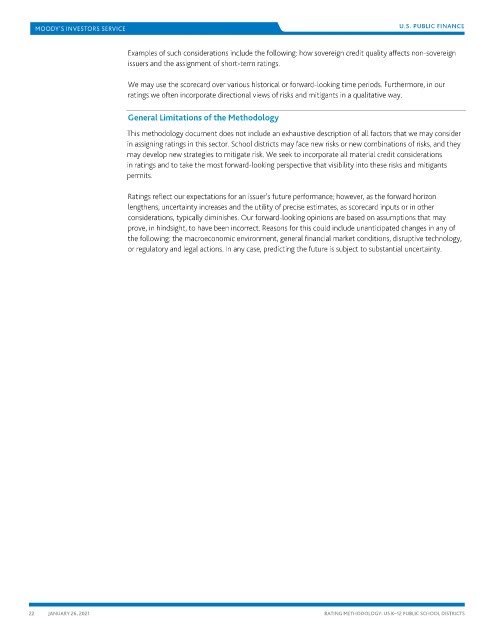Page 1656 - draft
P. 1656
U.S. PUBLIC FINANCE
Examples of such considerations include the following: how sovereign credit quality affects non-sovereign
issuers and the assignment of short-term ratings.
We may use the scorecard over various historical or forward-looking time periods. Furthermore, in our
ratings we often incorporate directional views of risks and mitigants in a qualitative way.
General Limitations of the Methodology
This methodology document does not include an exhaustive description of all factors that we may consider
in assigning ratings in this sector. School districts may face new risks or new combinations of risks, and they
may develop new strategies to mitigate risk. We seek to incorporate all material credit considerations
in ratings and to take the most forward-looking perspective that visibility into these risks and mitigants
permits.
Ratings reflect our expectations for an issuer’s future performance; however, as the forward horizon
lengthens, uncertainty increases and the utility of precise estimates, as scorecard inputs or in other
considerations, typically diminishes. Our forward-looking opinions are based on assumptions that may
prove, in hindsight, to have been incorrect. Reasons for this could include unanticipated changes in any of
the following: the macroeconomic environment, general financial market conditions, disruptive technology,
or regulatory and legal actions. In any case, predicting the future is subject to substantial uncertainty.
22 JANUARY 26, 2021 RATING METHODOLOGY: US K–12 PUBLIC SCHOOL DISTRICTS

